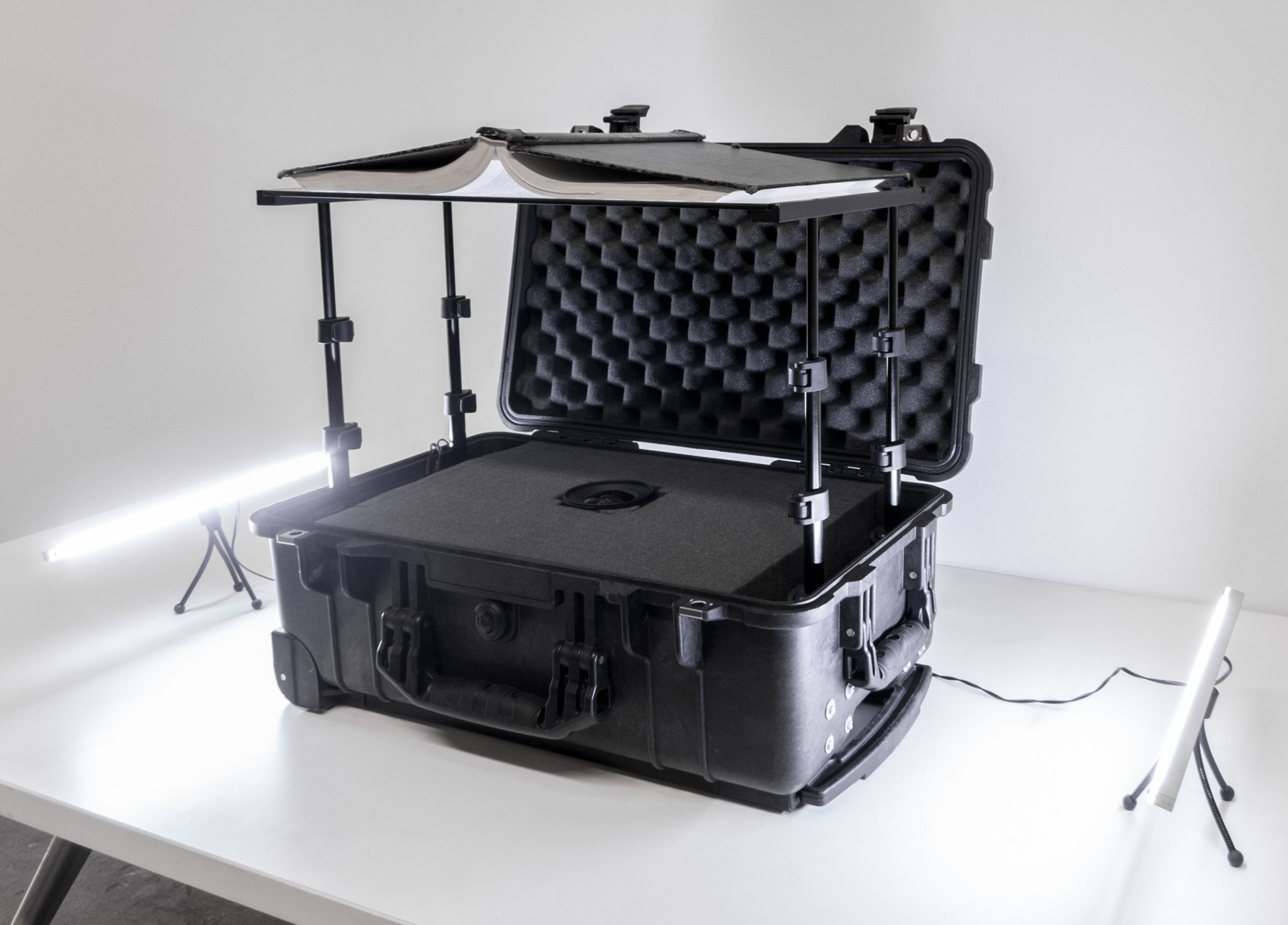






The piece Playing the Library attempts to actively document how people browse library books, where the library is treated as an instrument that can be played. A custom book scanner was built that could be moved around and deployed at a library quickly, this gives performers complete flexibility in choosing a library location to explore. The performer and artist meet at the library, where the performer selects a general location in the library to situate the scanner and use as a hub for browsing. The artist then asks the performer to provide their name and address and consent to having audio recorded and pictures taken. The artist then gives the performer a prompt:
“I am attempting to document how people browse libraries. We have a book scanner here that can scan an area approximately 11” x 19”. You can determine what is scanned, in what order things are scanned, and you can physically crop pages with white paper. I will be your technician today, unless you would like to operate the book scanner yourself. Everything is up to you. You determine when we start and stop, and how this performance unfolds.”
Typically a performance takes 1.5 – 2.5 hours and as few as 10 or as many as 400 pages are scanned during a performance. By removing myself from being an active participant in the performance, the performer’s own style is able to emerge unaffected. Through notes and audio recordings, I try to document how each performer engages with me as the technician, looks for validation, attempts a narrative structure, improvises, finds a cadence, and decides when the performance is over.
After each performance the scans are processed with Abby Fine Reader, one of the most advanced Optical Character Recognition (OCR) software systems available. The OCR software attempts to read each page and identify textual and visual content. It then tries to reconstruct this content in the same layout and fonts in a PDF file. From this file a book is printed for each performance. Presented in this show are 30 books from 30 performances that occurred over two months in 2014. Most performances took place in Los Angeles, CA and New York, NY.
The book scanner itself is shown here along with a set of digitized notes taken during each performance. Audio excerpts from conversations with each participant following his or her performance are played near the book scanner.
Taken together, this project contrasts the expansion of ideas that can develop from browsing a finite set of physical materials in a library against the narrowing of ideas that may come in the digital age, where filters and online curators direct you to the information they think you want.